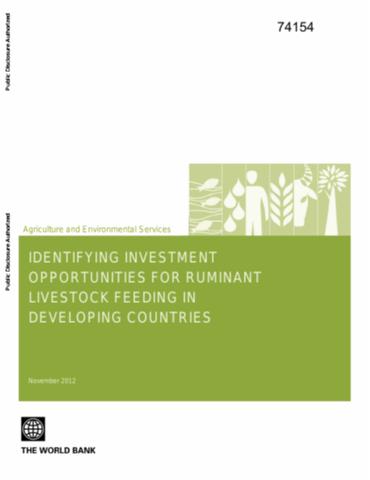Resource information
In the future scenario for livestock development, there is a continuing role for smallholder producers, particular for dairy and small ruminants, relying heavily on grass and crop-residues, however in a growth mode, intensifying production, and enhancing the efficiency of resource use (less land, labor and feed resources per unit product). In particular improving the efficiency of converting feed into milk and meat will be critical to increase their income. Ensuring that happens will require technical solutions, in ensuring that feed rations are adequately balanced with the appropriate feedstuffs of adequate quality, and institutional solutions on how to provide smallholders access to high quality information and reliable supplies of sufficient quality feeds. Investment strategies will need to be purposefully tailored to fit these specific contexts. This study assesses where the demand for feed is likely to change the most, and where investments in feed are most likely to increase animal productivity and improve the livelihoods of those who raise livestock. The study focuses on smallholder ruminant-based livestock systems because they have potentially major transformative effects on the livelihoods of producers and others engaged in the related value chains. While pig and poultry enterprises typically play an important role in livelihoods at very low input levels, such as backyard scavenging poultry, they tend to be replaced very quickly by larger scale commercial units. In India for instance, broiler production moved from a few hundred birds per unit to units with a weekly turnover of ten to twenty thousand between 2001 and 2006.


